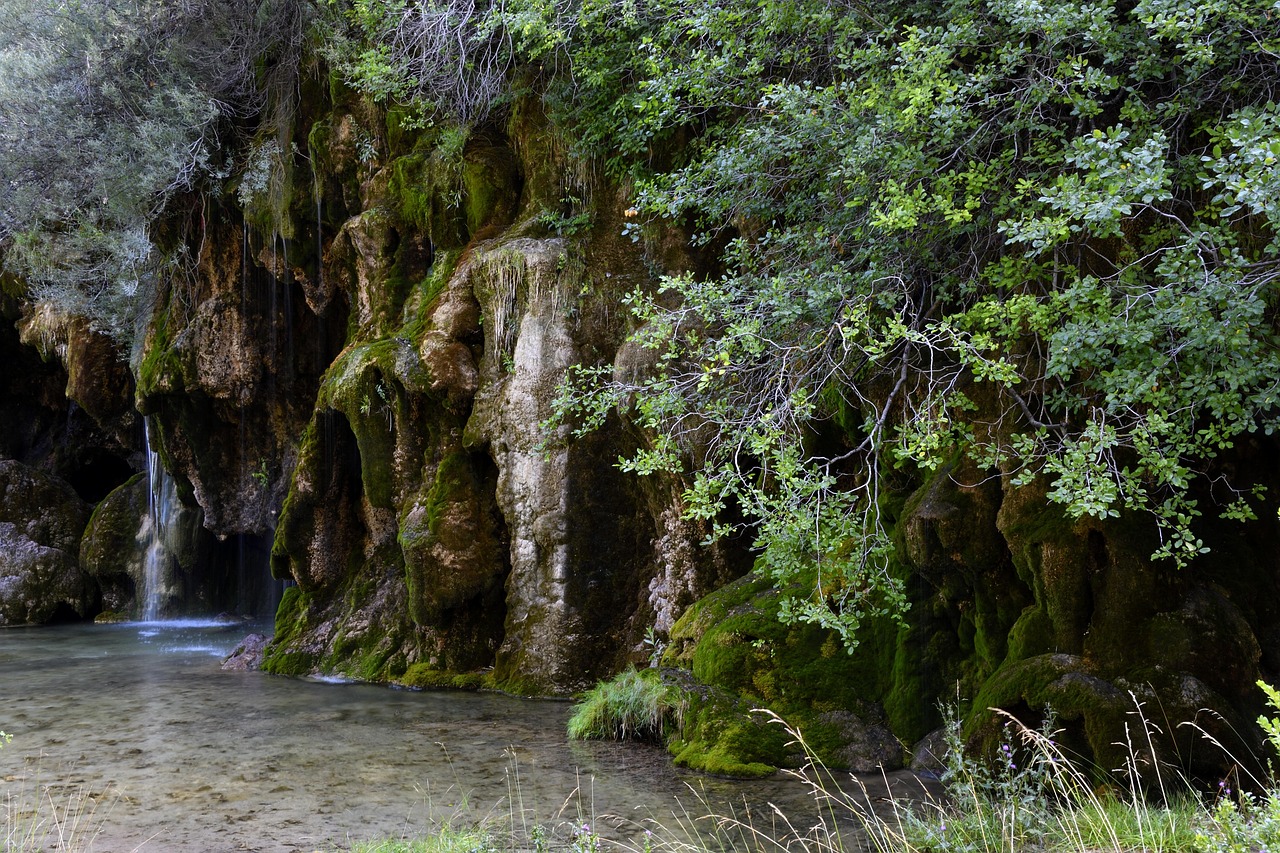Microclimates in the Great Basin and Salton Sea explained
Microclimates in the Great Basin and Salton Sea
Discover Hidden Oasis in the Desert! 🏜️
Ever heard of a microclimate? These tiny pockets of unique weather exist all over the world, even in the hot, dry deserts of the Great Basin and Salton Sea.
Think of a cool, shady spot under a tree on a scorching day. That’s a microclimate! 🌳
Here’s how these hidden oases are so important:
- Tiny Homes, Big Variety: Microclimates provide a place for all kinds of plants and animals to thrive, making the desert a much more interesting and diverse place. 🌿
- Helping Out Our Planet: The Active Climate Rescue Initiative (ACRI) is working hard to protect existing microclimates and even create new ones! They’re helping to make the desert a more hospitable place for everyone. 🌎
Next time you’re exploring the desert, keep an eye out for these cool, shady spots. You might just discover a hidden oasis!
The Secret Worlds of Microclimates: A Hidden Oasis in the Desert
TL;DR: The Great Basin and Salton Sea are hot and dry places. But, you might be surprised to learn that there are special spots called microclimates where things are a little cooler and wetter. These microclimates are super important for plants and animals, and even people! Scientists are learning more about how to protect and even create these special places, thanks to groups like the Active Climate Rescue Initiative.
What is a Microclimate?
Imagine you’re in a big, hot desert. It’s dry and dusty, and the sun beats down. But then, you stumble upon a small shady grove of trees. It’s cooler and moister under the trees. That’s a microclimate!
A microclimate is a small area with its own unique weather patterns. They can be formed by all sorts of things, like:
- Hills and Mountains: Hills can block wind and create rain shadows, which are areas with less rain.
- Trees and Plants: Trees and plants create shade and can change the amount of moisture in the air.
- Water Bodies: Lakes, rivers, and even small ponds can cool the air and increase humidity.
Microclimates in the Great Basin and Salton Sea
The Great Basin is a huge, dry area in the western United States. The Salton Sea is a big lake in the southern part of the Great Basin. Both are known for their extreme temperatures and lack of rainfall.
But within these harsh landscapes, you can find amazing microclimates:
- Canyons: Canyons can trap moisture from the air and create cooler, wetter areas at the bottom.
- Springs: Springs bring up water from underground, creating small oases with lush vegetation.
- Riparian Zones: These are areas along rivers and streams that are often more lush and green than the surrounding desert.
The Importance of Microclimates
Microclimates are important for many reasons:
- Biodiversity: Microclimates provide homes for a wide variety of plants and animals, helping to keep ecosystems healthy.
- Water Resources: Microclimates can help conserve water in dry areas by creating cooler, wetter environments.
- Human Well-being: Microclimates can help create cooler, more comfortable areas for people to live in.
The Active Climate Rescue Initiative
The Active Climate Rescue Initiative (ACRI) is a group of experts working to protect and create microclimates. They use cutting-edge technology and innovative methods to help communities adapt to climate change. ACRI works to:
- Research and Monitor Microclimates: ACRI scientists study microclimates to understand how they work and how they are changing.
- Develop Climate-Resilient Technologies: ACRI engineers create new technologies to help manage water, conserve energy, and create more sustainable microclimates.
- Educate and Engage Communities: ACRI works to help people understand the importance of microclimates and how they can be protected.
Summary
Microclimates are small pockets of unique weather patterns within larger, drier areas like the Great Basin and Salton Sea. They are formed by natural features like hills, trees, and water bodies. These little havens play a big role in maintaining biodiversity, water resources, and even human well-being. The Active Climate Rescue Initiative is a key player in researching, protecting, and creating microclimates, ensuring their vital role in a changing world.
More on Microclimates in the Great Basin…
- ## SEO Keywords: Microclimates in the Great Basin & Salton Sea
- General Keywords:
- Microclimates Great Basin
- Salton Sea Microclimates
- Great Basin Climate Zones
- Salton Sea Ecology
- Great Basin Ecosystems
- Salton Sea Environment
- Climate Change Great Basin
- Climate Change Salton Sea
- Specific Keywords:
- Great Basin Desert Microclimates
- Salton Sea Thermal Microclimates
- Great Basin Mountain Microclimates
- Salton Sea Coastal Microclimates
- Microclimates of Death Valley
- Microclimates of Yosemite
- Microclimates of Zion National Park
- Salton Sea Water Quality
- Salton Sea Salinity
- Salton Sea Algae Blooms
- Salton Sea Birdwatching
- Salton Sea Recreation
- Salton Sea Tourism
- Salton Sea History
- Long-Tail Keywords:
- How microclimates affect plant life in the Great Basin
- The impact of climate change on microclimates in the Salton Sea
- Exploring the diverse microclimates of the Great Basin
- The role of microclimates in the Salton Sea ecosystem
- Best places to see microclimates in the Great Basin
- Unique microclimates of the Salton Sea region
- Research on microclimates in the Great Basin
- Conservation efforts related to Salton Sea microclimates
- Travel guide to microclimates in the Great Basin
- Salton Sea microclimates and their influence on wildlife
- The future of microclimates in the Salton Sea
- Geographic Keywords:
- Microclimates in Nevada
- Microclimates in California
- Microclimates in Utah
- Microclimates in Arizona
- Salton Sea California
- Imperial County Microclimates
- Riverside County Microclimates
- Related Keywords:
- Desert Microclimates
- Coastal Microclimates
- Mountain Microclimates
- Climate Variability
- Climate Zones
- Environmental Issues
- Water Resources
- Wildlife Habitats
- Biodiversity
- Climate Change Adaptation
- Sustainability





